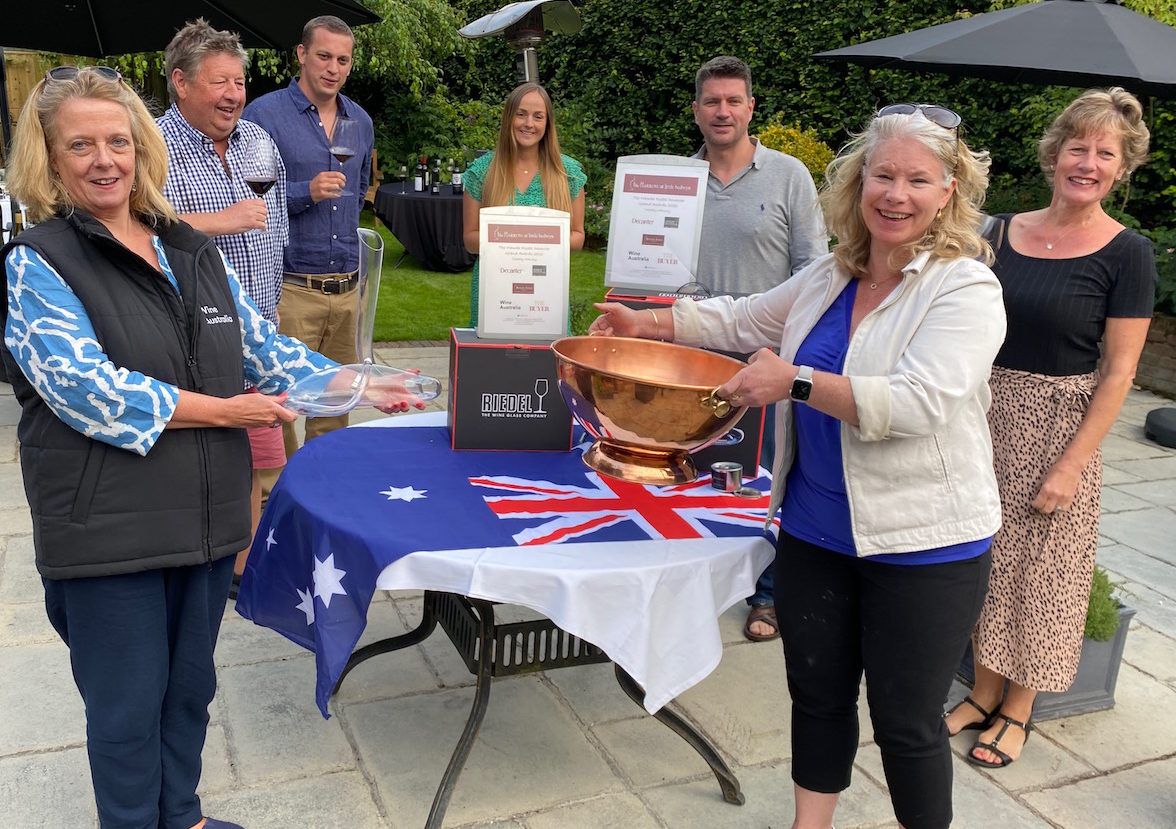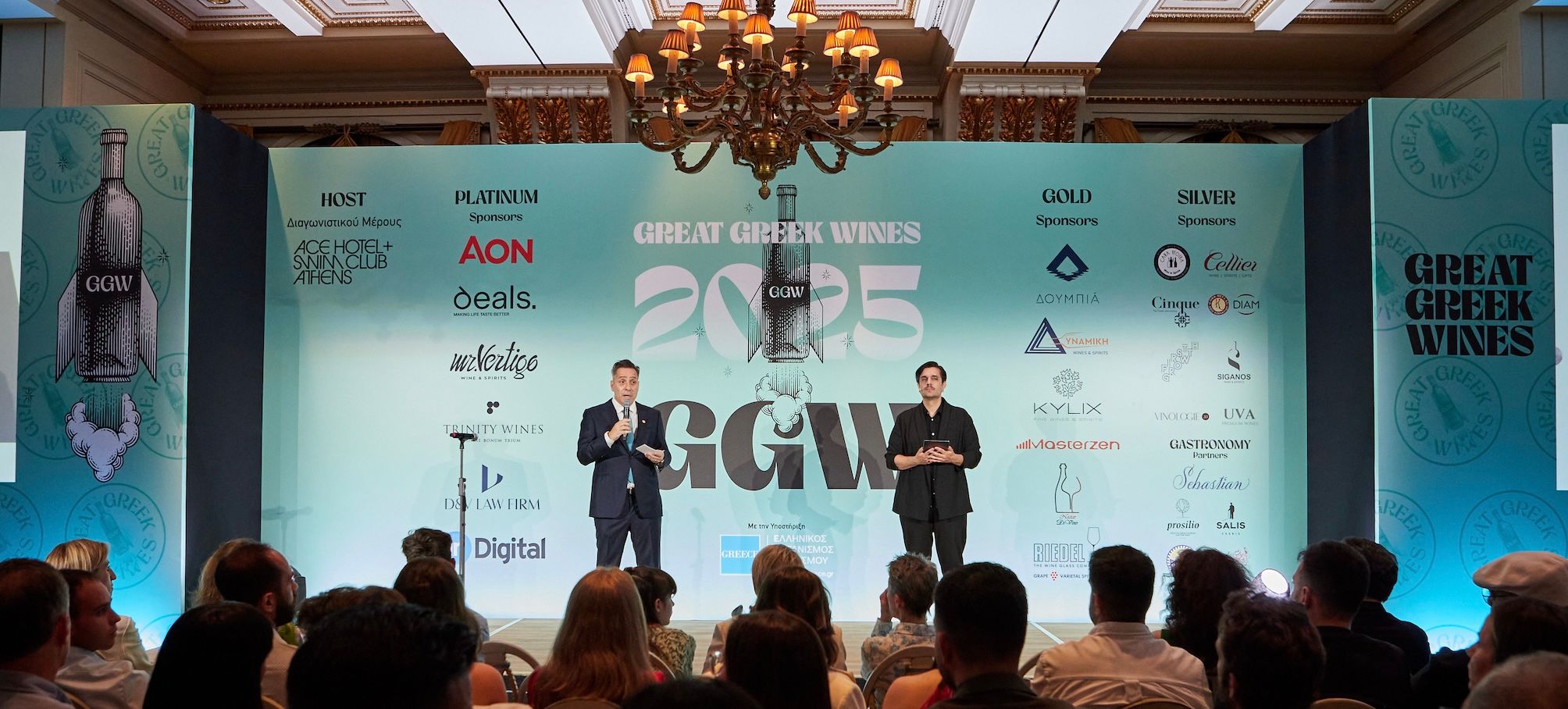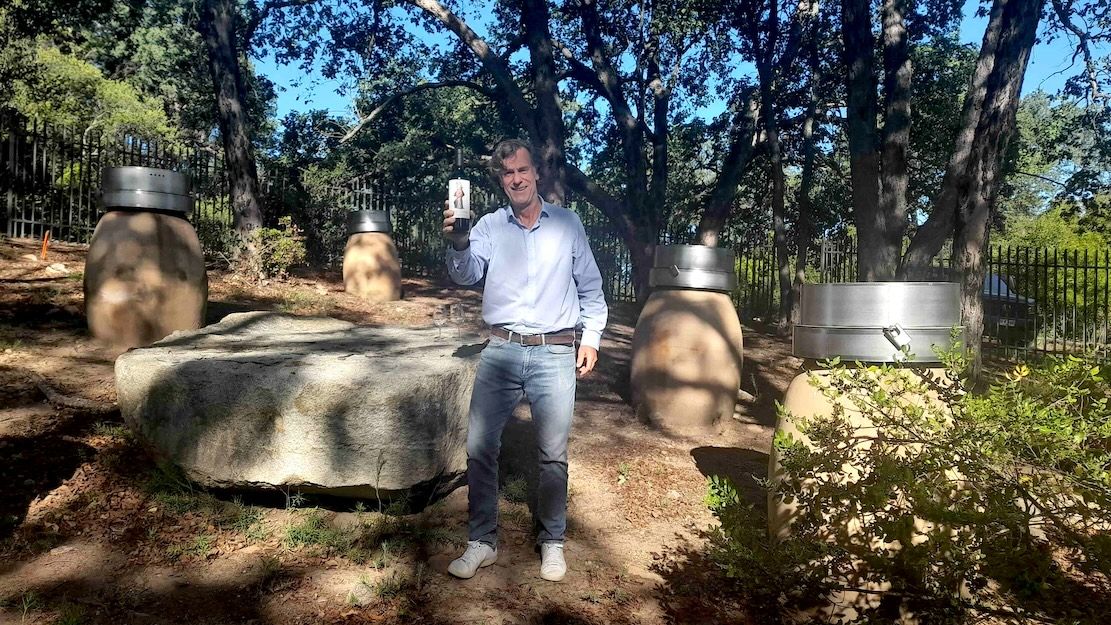Each category was an embarrassment of riches – very hard to separate which was the better wine on show.
Never has the old adage ‘It’s not the winning it’s the taking part that counts’ been more apt. For here at the Mamba Riedel Decanter Grand Awards 2020 was an awesome line-up of some of the finest Australian wines ever produced, every one of them a previous Mamba award winner, and every one of them a superb true reflection of both variety and region.
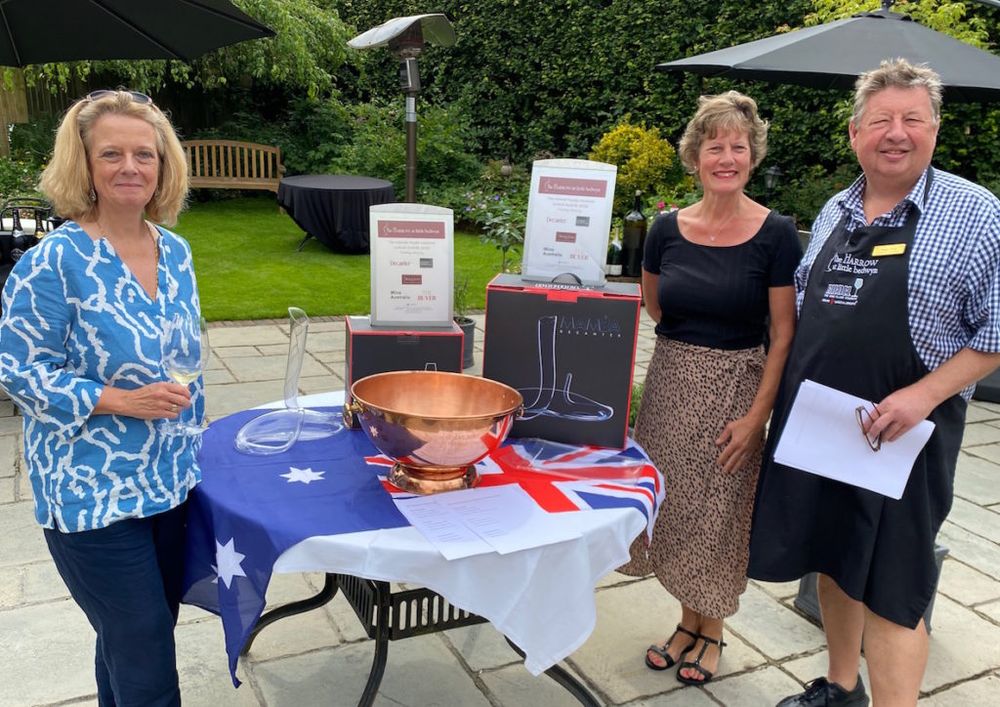
Laura Jewell, Wine Australia chief and Sue and Roger Jones
The event, which was first held in 2006, was always meant to highlight the quality and value of Australian wine in the UK market, but also its depth – to open the stage out to wines beyond the Grange’s and Hill of Grace’s of this world, and to showcase Australia’s ability to produce world class wines in every category.
One thing that the nine judges at the Grand Awards were all agreed on was that every one of the 11 categories were so strong that it was often simply a matter of personal preference which was the ‘better’ wine.
Judging it was like trying to judge gymnastics at the Olympics – who is better Olga Korbut or Nadia Comaneci? – it felt like each of the finalists were on a perfect 10 to start with and it was our job to try (if we could) to find the tiniest slip or fault. Hard when you are faced with a line-up of wines that is most likely the best library of aged Australian wines in the country.
Unlike previous awards, which focused on wines from two grape varieties, because the Grand Final was a ‘Champion of Champions’ event and featured all the previous winners, every category was represented. Once the judges picked a winner from each category, the four wines which won by the highest margins were re-voted on with Leeuwin Estate Cabernet Sauvignon 2008 voted ‘Best in Show’. Liberty Wines, which had the most winners, was named the importer that had done the most for developing Australian wine in the UK, a fitting reprise of its success at the awards last year when it swept the board.
The awards were hosted and sponsored by Sue and Roger Jones, of the now retired Michelin-starred restaurant The Harrow at Little Bedwyn in Wiltshire along with the customary support from Decanter, glassware maker Riedel and Wine Australia. In a touch typical of Sue and Roger one of the judges was representing the NHS, chartered physiotherapist Beth Jones.
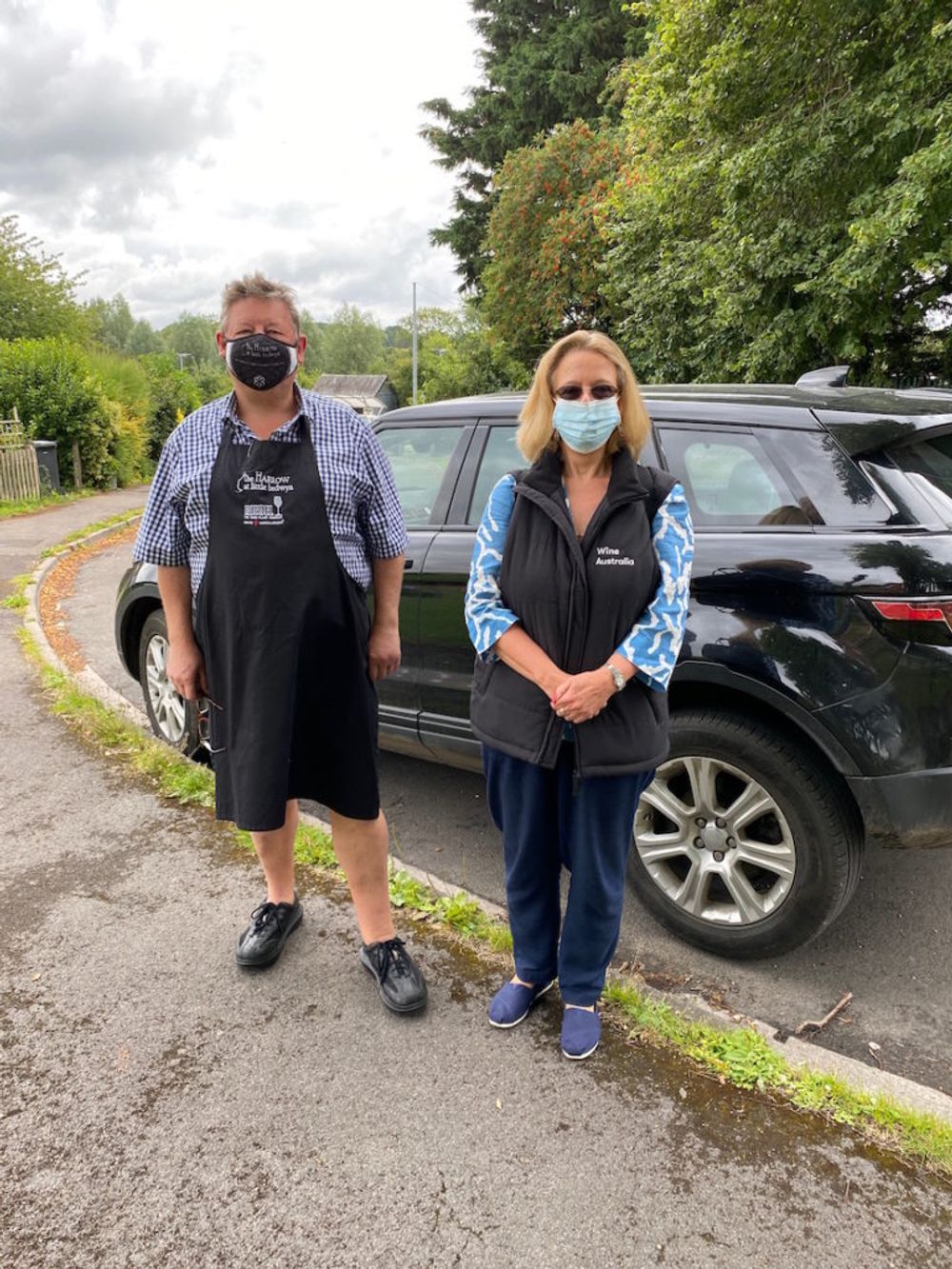
The day’s events had to stick to the strict letter of the law. Roger Jones and Laura Jewell
Covid-19 did its best to spoil the party, of course, and although this was not the ‘all-guns-blazing’ finale that Sue and Roger had planned it was certainly not going out half-cocked. Returning to London in conditions reminiscent of The Wasteland one could misquote T.S. Eliot to say the Mambas did indeed end ‘with a bang not a whimper’.
The Grand Final of the Mambas illustrated once again two things: first, that although individual wines might pick up gongs at this event it is Australian wine as a genre that is always the winner; and second, it owes a huge debt to the Jones’ for their passion and generosity in making sure that the wider world knows just that.
So who were the finalists and the winners?
(winners in bold)
Sparkling Wine

Arras Grand Cuvée 2008
Arras Late Disgorged 2004
Arras Blanc de Blanc Museum Release 2004
Never in doubt which wine producer was going to win the sparkling category but it was fitting that the amply textured and elegant Grand Cuvée pipped the more expensive Late Disgorged to the post, illustrating what value can be found with the Tasmania-based Arras.
Riesling
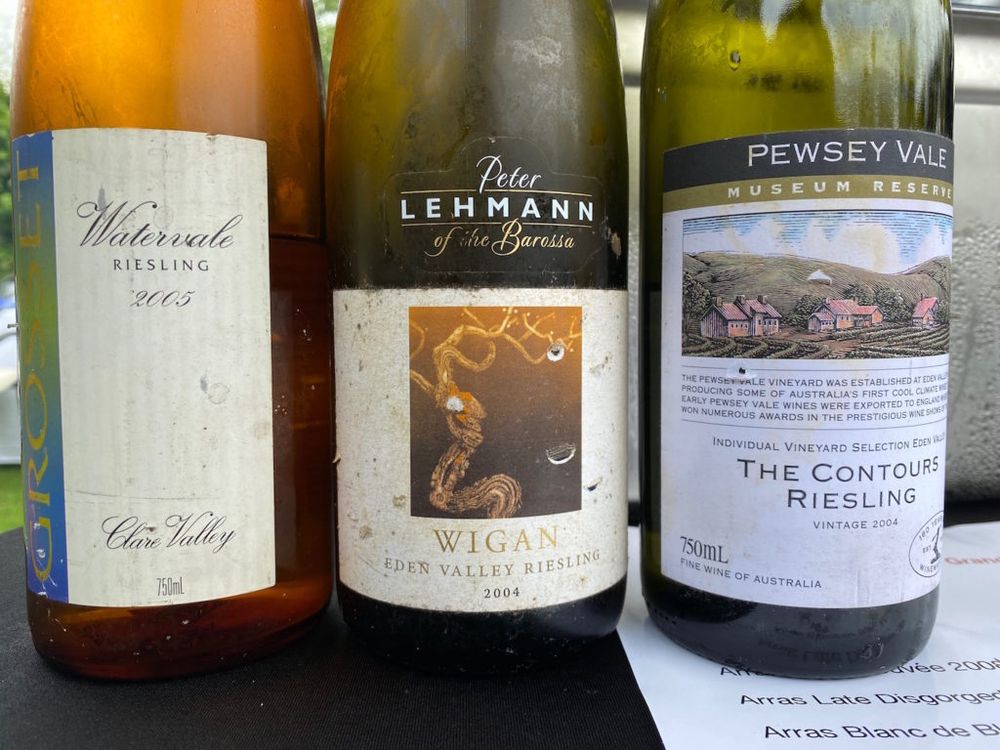
Grosset Watervale 2005
Wigan Peter Leham 2004
Contours Pewsey Vale 2004
Riesling was always going to hotly contested and any of the above could easily have won but it was the wonderful balance of the bright shiny gold Contours Pewsey Vale, with its layers of flavour that kept giving you more and more which was singled out by the judges.
Sauvignon Blanc
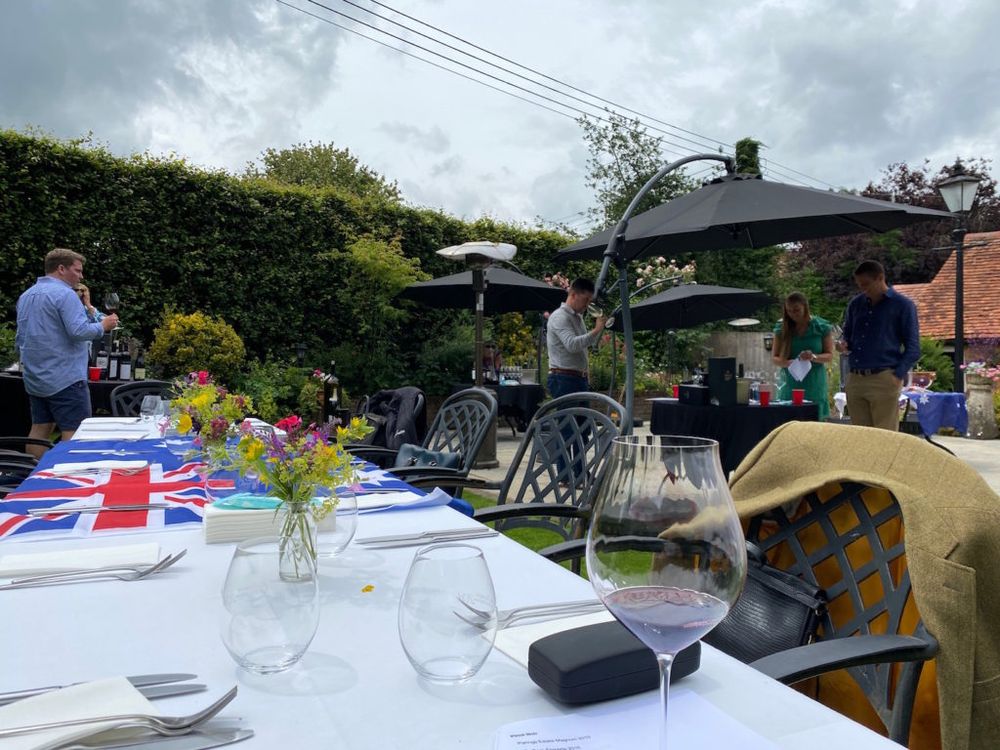
OK, so I didn’t take a pic of the SBs!
Shaw & Smith 2019
Larry Cherubino 2019
For me the Sauvignon Blancs were a ‘tale of two grapefruits’ sweet yellow in the case of the more herbal Shaw & Smith and pink, with Cherubino’s more primary-fruited crowd pleaser, which pleased the judges more.
Chardonnay
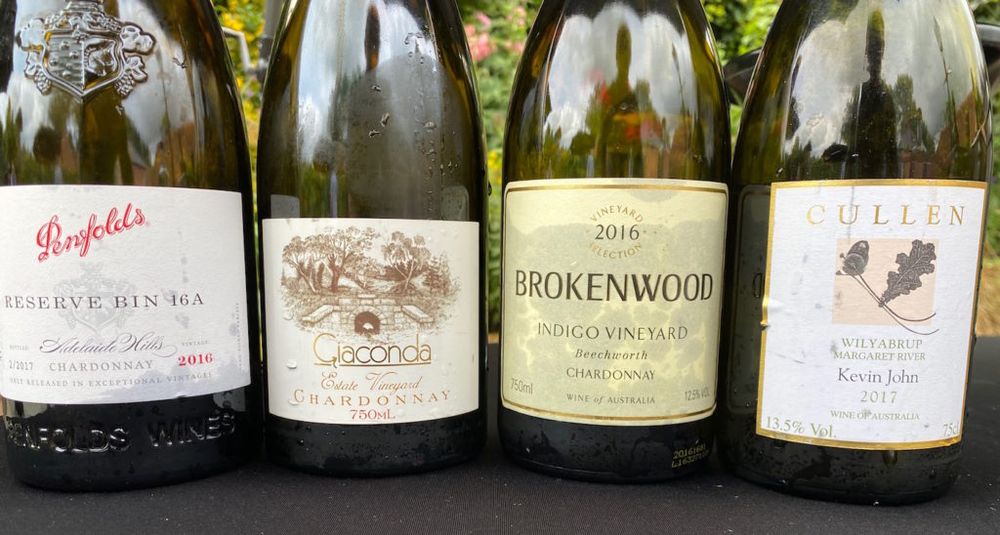
Penfolds Bin 16A
Giaconda 2016
Brokenwood Indigo 2016
Cullen Kevin John 2017
All of the Chardonnays were showing well on the day and this was hotly debated with personal preference very much to the fore and discussion on the wines’ age and which would be the winner if it was re-contested in a decade’s time. The Cullen had a slightly keener palate than the others – tense and ripe at the same time, highly textured with firm acidity underpinning the fruit.
Semillon

Moss Wood 2006
Peter Lehmann Margaret Semillon 2006
Tyrrell’s VAT 1 2009
Mount Horrocks 2006
The hardest to separate, and initially a draw between the Moss Wood and Peter Lehmann which a re-taste and re-vote decided in Moss Wood’s favour. Good to see what Margaret River can achieve with Semillon – it was textbook really with crisp lemon acidity balanced with a nutty roundness on the palate.
Pinot Noir
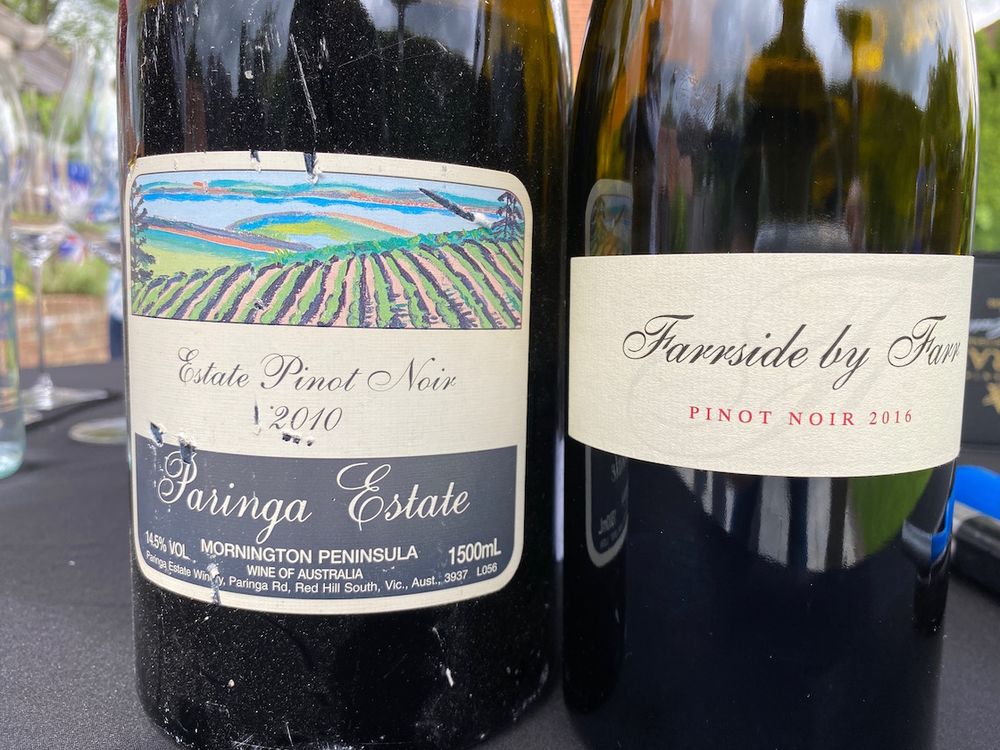
Paringa Estate Magnum 2010
Farrside by Farr 2016
Paringa from Mornington Peninsula just pipped Farrside to best Pinot Noir, the wine drifted a little after an hour but on opening it was extraordinary – russet, see-through at the edges, with wild hedgerow fruit, mulberry, crème de mûre and a blood orange finish all held together with firm acidity.
Cabernet Sauvignon
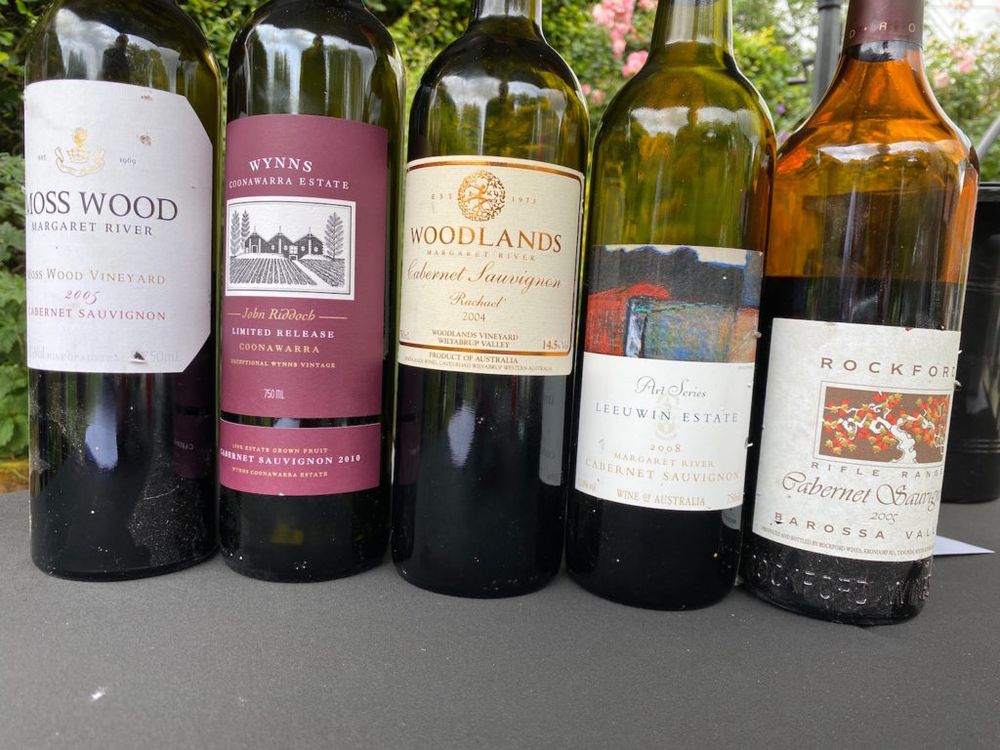
Moss Wood 2005
Wynns John Ruddoch 2010
Woodlands Rachel 2004
Leeuwin Estate 2008
Rockford Estate 2005
It was hard to put a playing card between these five wines at first, so good were they at reminding us all what can be achieved with Cabernet Sauvignon in Australia. When we voted, though, Leeuwin Estate 2008 was the clear winner. To re-hash that old one – it had a real ‘iron fist in a velvet glove’ feel. Fresh, multi-layered, highly textured, beautiful balance with the fruit less primary and leaning towards red-and-black rather than totally black. The wine just delivered more on the day – greater elegance, poise and complexity.
Cabernet / Shiraz

Yalumba The Caley 2012
Yalumba The Reserve 2004
Godolphin Glaetzer 2005
A category where the wine in the glass now rather than its potential separated the two Yalumba wines, the Reserve delivering the complete Aussie claret package from its tempting, seductive nose, juicy, meaty core to its mouth-puckeringly dry finish.
Shiraz

Clarendon Hills Astralis 2005
Dan Standish The Standish 2006
Ben Glaetzer Amon Ra 2005
Mitolo GAM 2005
Penfolds RWT 2010
John Duval Eligo 2008
Eileen Hardy The Shiraz 2004
Octavius Yalumba 2004
Brokenwood Graveyard Shiraz 2002
Interesting to taste such a line-up of Aussie Shiraz in one go, and to also reflect on how tastes have changed – many of the wines delivering a whallop of fruit, tannin and alcohol that left one a little dazed, despite the fact that they were all individually without fault, and superb wines in their own right. The winner, Brokenwood, displayed its greater evolution perfectly – it was light russet, almost see-through, lighter on the palate too, fresher, more citrus in the mix, racier, with leaner tannins and the fruit heading from secondary to tertiary almost.
Dessert
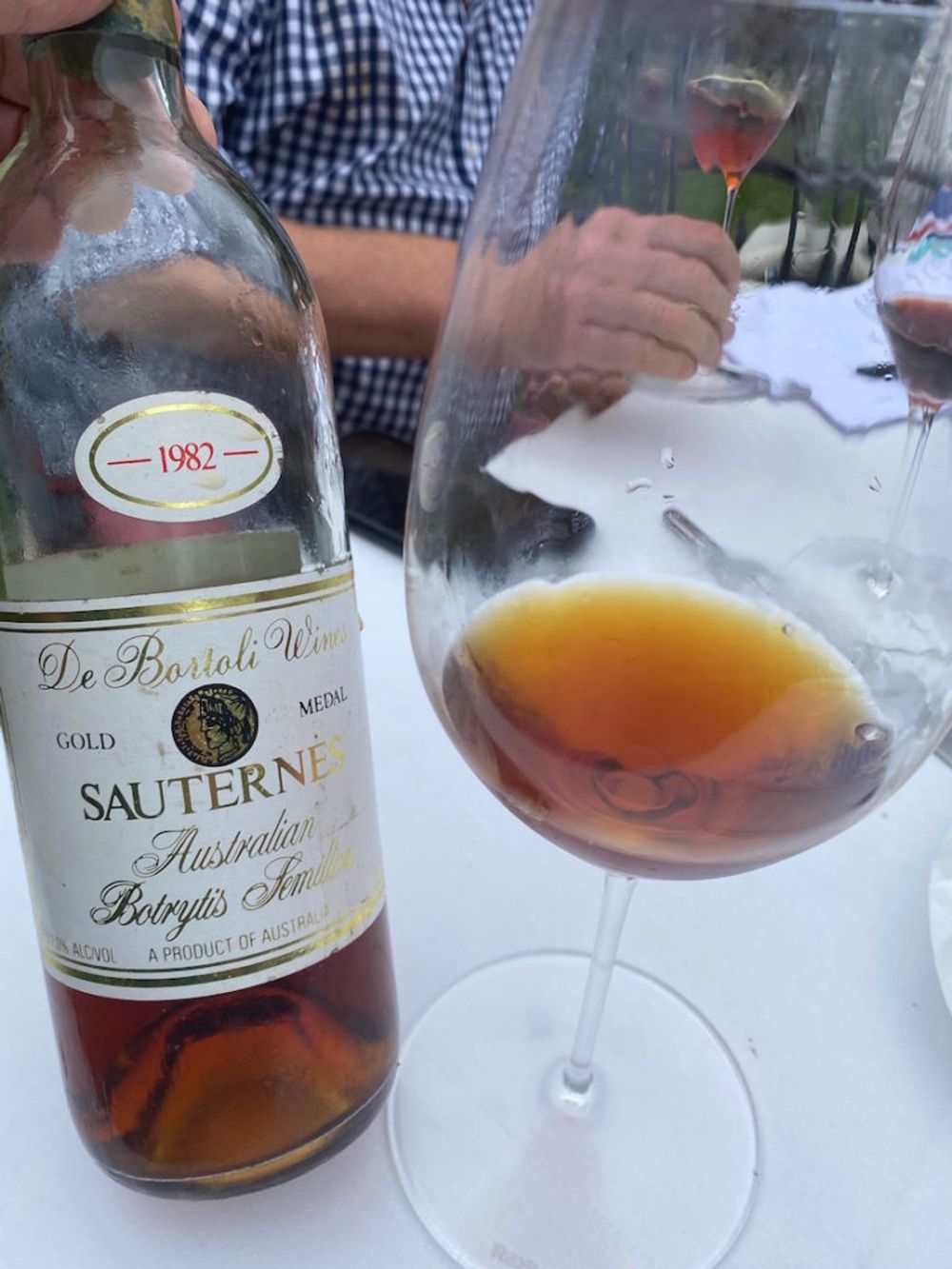
De Bortoli Noble One Sauternes 1982
There was still a lot of life in the De Bortoli in a category that was less about competition than an excuse to open it and drink it after lunch. It was like pouring a sunset into your glass that, like the Cab/Shiraz was a perfect example of an Aussie ‘take’ on a Bordeaux classic. A wine whose supply will sadly end way before the wine in the bottle gives up the ghost. Wow.
Muscat
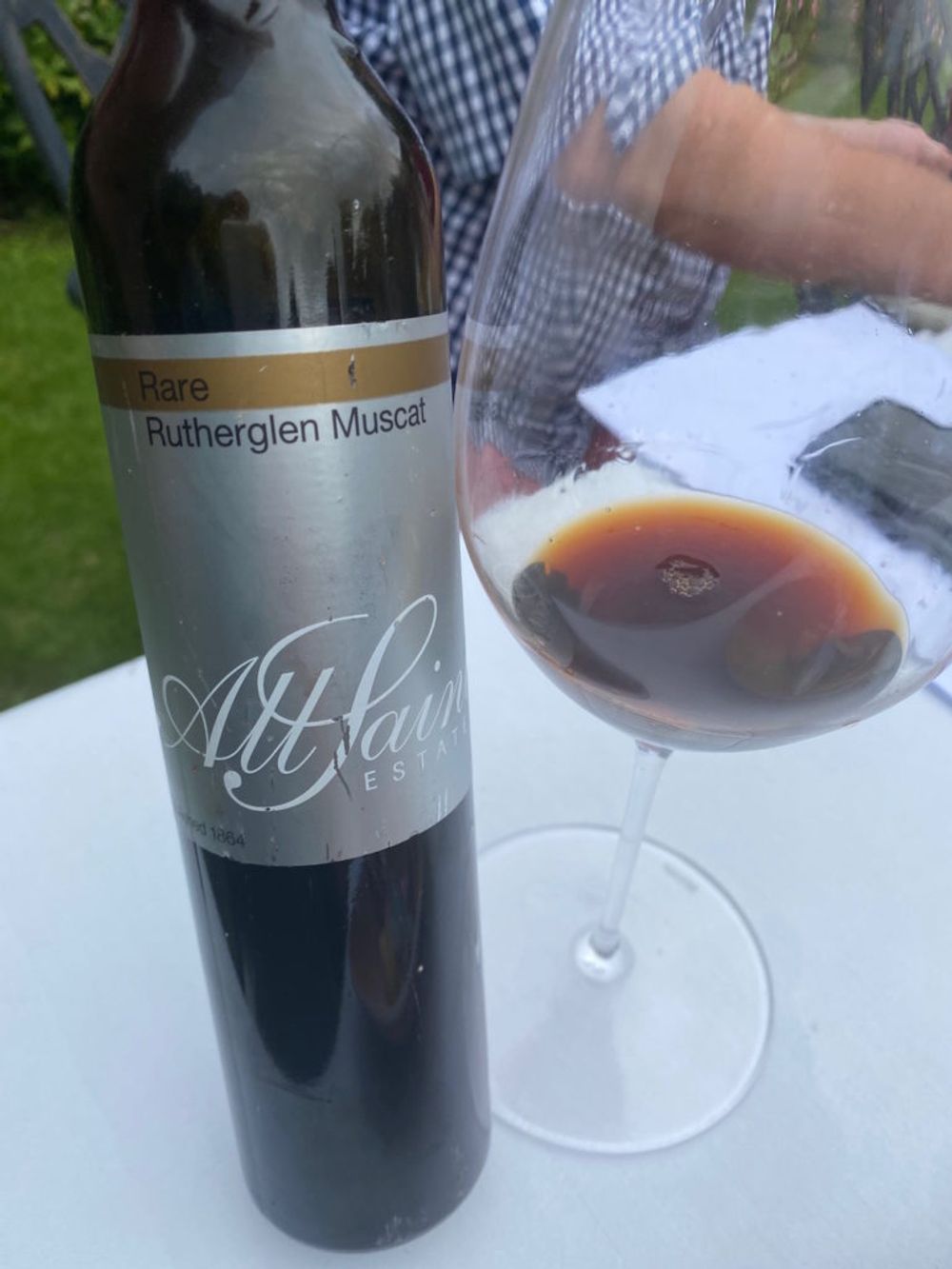
All Saints Rare Muscat
A category that Australia has made all its own – deep tobacco colour with yellow edging, unctuous, oleaginous, with wicked little whiffs of muscovado and tar and macerated black fruit you find at the bottom of an old rumtopf. Every home should have a bottle just don’t ask what the RS is!
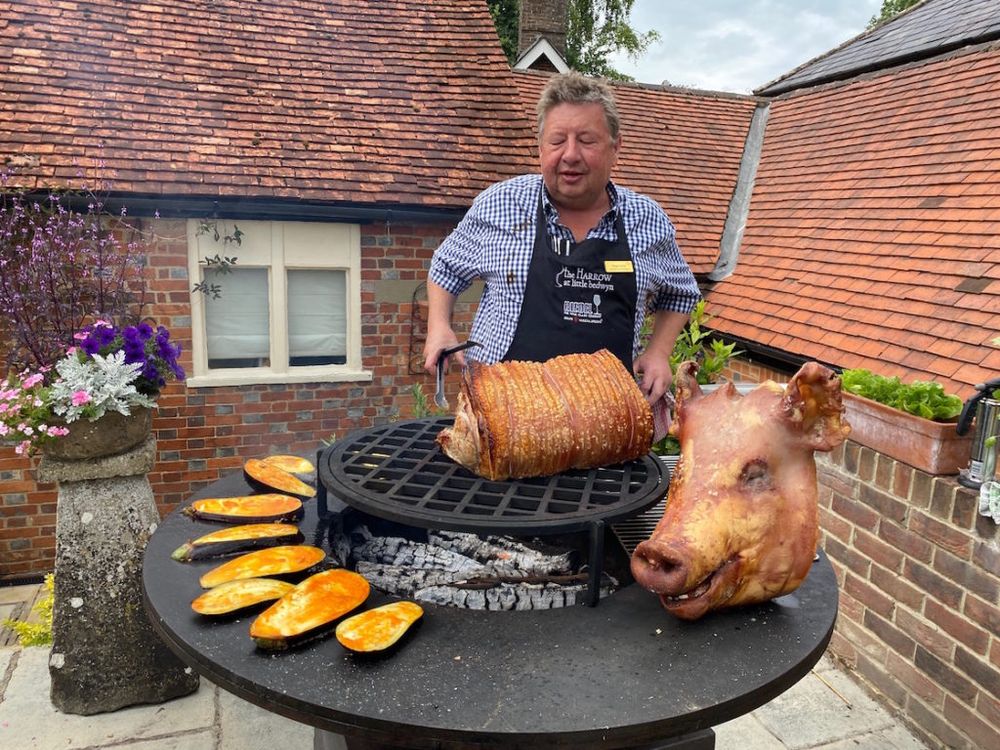
Roger Jones (sporting an excellent ‘quarantan’) ensured that vegetarians were more than adequately provided for
